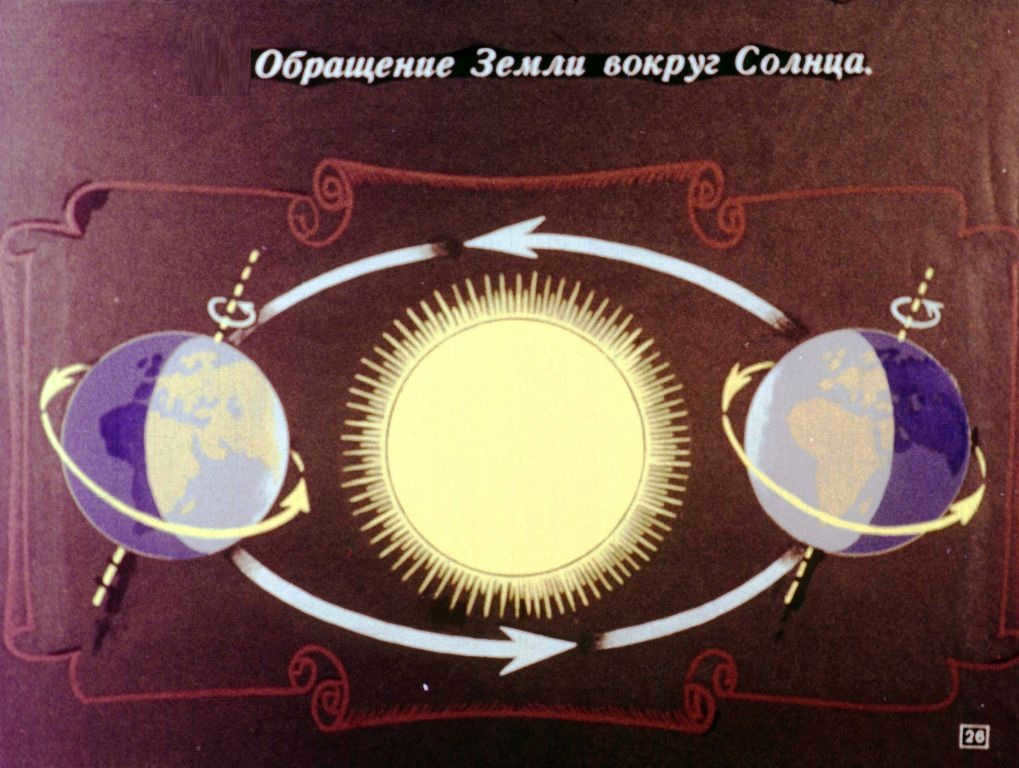When I was a child, time seemed to move at a glacial pace. I remember fantasizing about ice skating during the summer and swimming in the river during the never-ending winter. As I got older, I realized that our vast planet experiences different seasons throughout the year. We have harsh winters and scorching summers, pleasant springs and rainy autumns. Plus, with the convenience of airplanes, it’s easy to travel to a location with the desired weather conditions. Now as an adult, I no longer wish time away but instead embrace each season: the first snowfall, blooming spring flowers, bountiful summer harvests, and the golden hues of autumn.
This leads to the following questions:
- What causes the change of seasons?
- Do all regions on our planet experience the four seasons?
- What about the variations in seasons on other planets in our solar system?
The rotation of the seasons
When we examine the movement of the Earth in relation to the Sun, we discover that the Earth’s axis is tilted at an angle of 66.5° to the plane of its orbit. As a result, different regions of the Earth experience varying amounts of solar heat at different points along its trajectory.
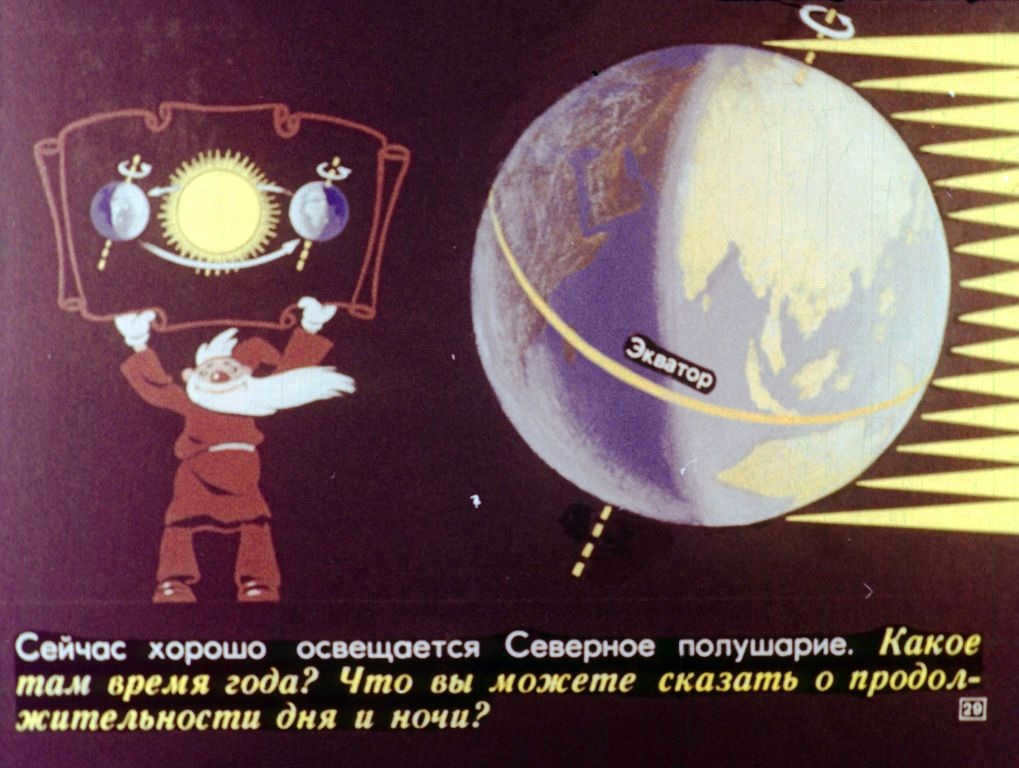
When the North Pole of the planet is turned towards our star, the Northern Hemisphere receives the highest amount of energy. This time of the year is characterized by a polar day at the pole and summer in the Northern Hemisphere. On the other hand, the South Pole is in shadow during this period, experiencing polar night and winter in the Southern Hemisphere.
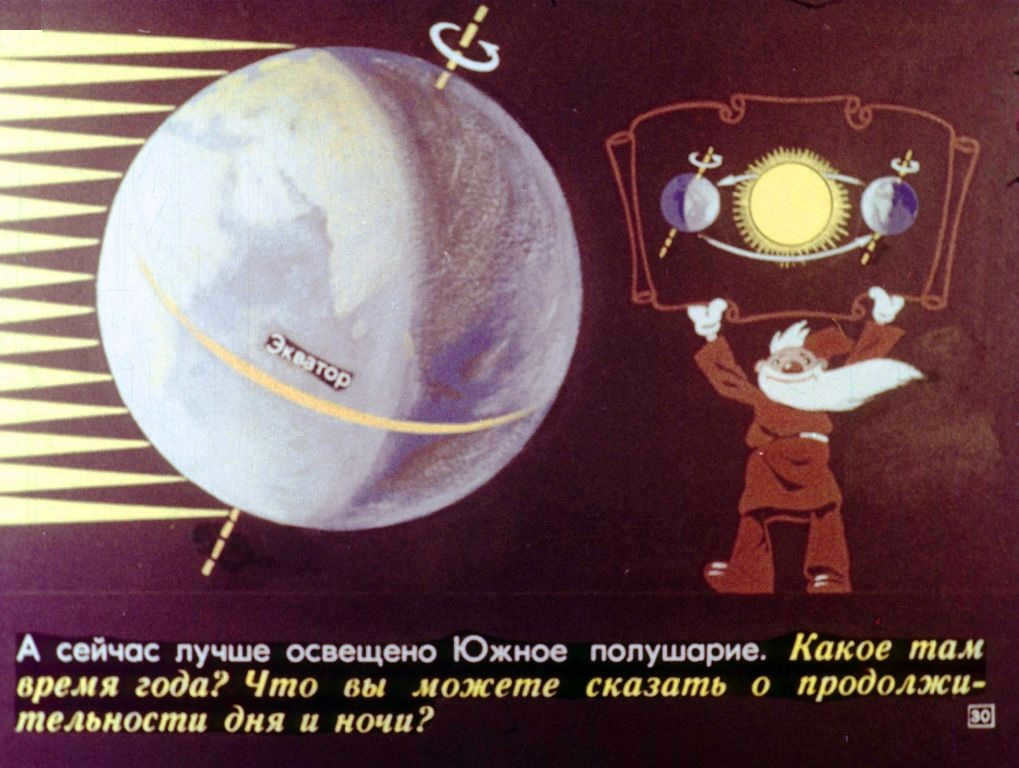
After six months, the Sun will be located at the South Pole of the Earth, leading to a reversal of the seasons.
Regions where the cycle of four seasons is experienced
The tropical regions are the areas closest to the sun on the Earth.
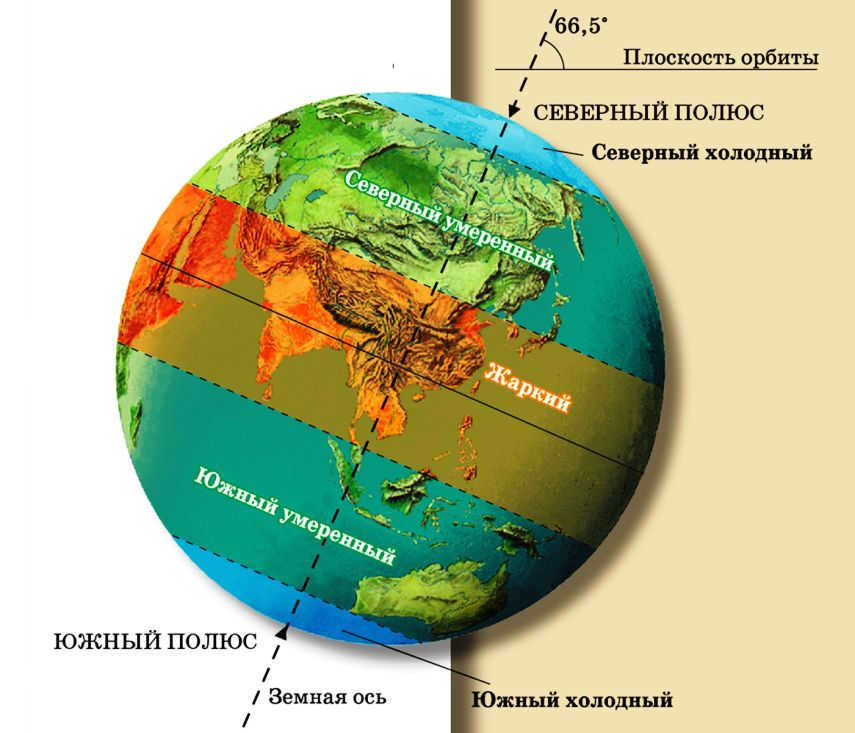
There, the tropical belt is bathed in the sun’s rays at an angle ranging from 66.5° to 90°, resulting in almost year-round summer.
As you move away from the scorching equator, the angle at which the rays hit the Earth decreases, leading to a decrease in the amount of solar energy per unit area.
The transition between seasons is most noticeable in the middle latitudes, where the angle of incidence of the rays and the length of daylight vary depending on the time of year.
Seasonality extends all the way to the polar regions, where it transforms into an everlasting winter, with summer coinciding with a cold six-month day and winter accompanied by a harsh six-month night.
Seasons on the planets of the solar system
With its angle of inclination to its orbit and day duration being similar to Earth’s, the planet Mars experiences a change of seasons that is almost identical to our planet’s.
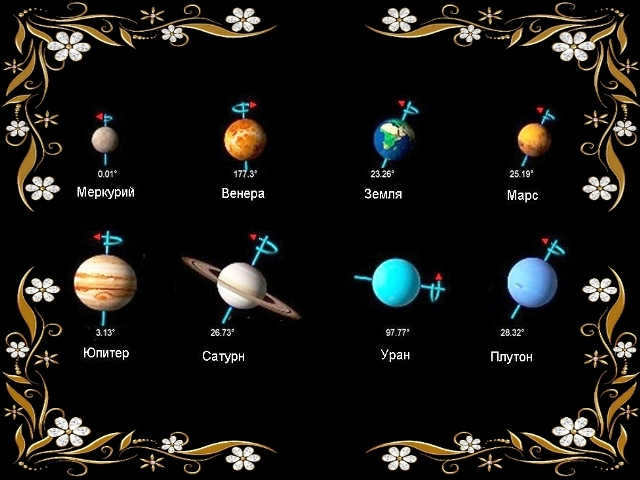
The seasons change on different planets in the solar system. For example, on Mercury, Venus, and Jupiter, there is no significant change of seasons because their axes are almost perpendicular to their orbits. Meanwhile, Uranus is unique as it is practically lying on its side with an inclination of 7.7°. Despite its rapid day change of 17 hours, Uranus experiences polar night and polar day that last for 42 Earth years each. This is because Uranus takes 84 years to complete one revolution around the Sun.
Which planets in the solar system experience changing seasons?

All the planets in our solar system, with the exception of Mercury, Venus, and Jupiter, experience changes in seasons.
However, these changes are minimal.
The occurrence of seasons depends on the tilt of a planet’s axis in relation to its orbit around the Sun.
If the tilt is close to zero (or 180 degrees, or 90 degrees), then there will be no significant changes in seasons.
Venus, for example, has a tilt of 177.4 degrees, which is almost twice the right angle, but still close to 180 degrees, and yet it does not experience noticeable changes in seasons.

What causes the change of seasons?
The change of seasons is caused by various factors.

Which celestial bodies constitute the solar system?
What celestial bodies make up the solar system?

Is it possible that the Earth orbits the Sun and there are no changes in seasons?
Is it possible that the Earth revolves around the Sun and there are no changes in seasons?

What is the planet’s orbit? What is the shape of planets in the solar system?
What is a planet’s orbit? What shape do the planets in the solar system have?

Which planet in the solar system has the longest and shortest orbital period?
Which planet in the solar system has the longest and shortest orbital period?

What causes the change of seasons?
What is the reason behind the change of seasons?

What are the effects of Earth’s axial rotation?
Earth’s axial rotation leads to various outcomes, including:
- Seasonal variations
- Alternation of day and night
- Solar activity

Which planet belongs to the solar system?
A planet that is part of the solar system.

What causes the earth to rotate on its axis? A) The change of seasons B) The change of day and night C) Solar activity D) Volcanic activity?
One result of the earth’s axial rotation is A) the change of seasons B) the change of day and night C) solar activity D) volcanic activity.

What causes the change of seasons?
Have you ever wondered why the change of seasons occurs? This phenomenon has puzzled many people for centuries. If you’re looking for an answer to this question, you’ve come to the right place. Here in the Geography category, we provide answers to various questions related to the change of seasons in the solar system. Using our automatic smart search, you can explore similar topics of interest and find the information you need. However, if you still have doubts or need more comprehensive coverage of the topic, feel free to create your own question using the button at the top of the page or engage in a discussion with other visitors.

The region is divided into four climatic zones that run parallel to each other. Due to the Asian continent’s impact, the northern Indian Ocean experiences a monsoon climate characterized by regular cyclones that make their way towards the coastal areas. How about that?

Africa is home to all three races, with the most prevalent being the Negroid race, especially in former European colonies such as South Africa.

It is not a difficult task, I will provide you with the information you need.

The Nelson River is a Canadian river that spans 640 kilometers in length. It originates from Lake Winnipeg and flows into Hudson Bay. It serves as a drainage system for the Bow-Saskatchewan-Nelson lake-river system, with a basin area of 1072 thousand km2. The river is known for its rapids, and the average water flow at its mouth is 23 cubic meters per second.

Here is a postscript. It is readily available online.))

Indicators of steady, cloudless, precipitation-free weather: – during fair weather, the temperature drops gradually, atmospheric pressure rises slowly, and small, sharp-edged cumulus clouds form. The wind blows from the northeast or east.

14 A 15 B 16 A 17 C 18 B 19 D 20 B 21 Alice 22 Brummie 23 Hawaii 24 dog 25 COP.
© 2000-2023. You must provide a reference if you use any part or all of the materials. 16+
The website is secured by reCAPTCHA technology, which is subject to Google’s Privacy Policy and Terms of Use.
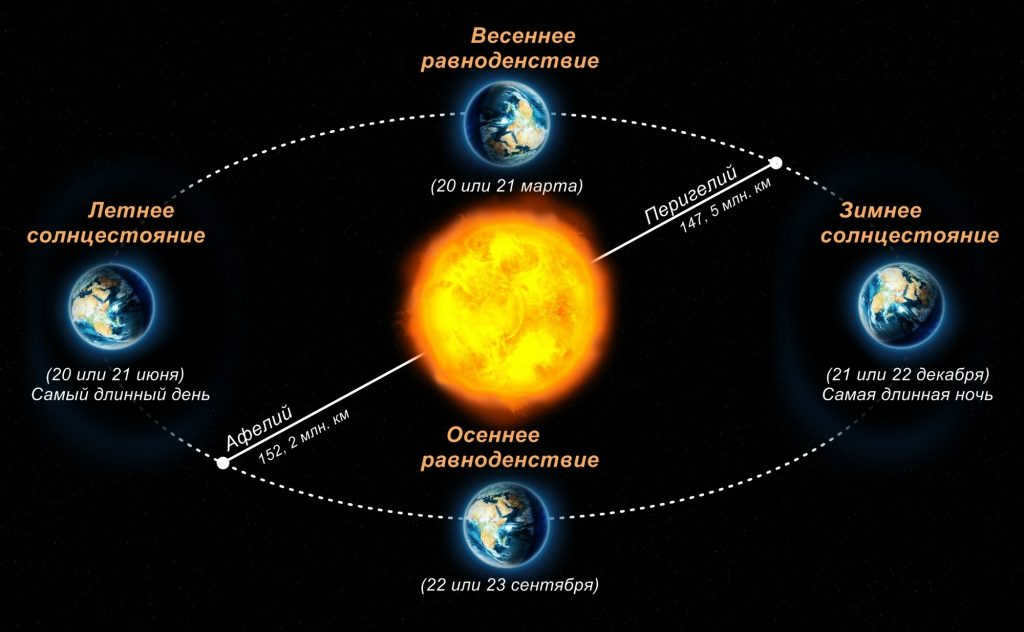
What is the reason for the change of seasons? Ancient thinkers and astronomers in Greece believed that the change of seasons occurred for mystical reasons, unrelated to the movement of the planets in the solar system.
Additionally, they believed that the rest of the universe was in motion around our planet, while the Earth itself remained still. This belief continued into the Middle Ages for religious purposes.
Nicolaus Copernicus revolutionized this concept by proving that the Earth and other planets orbit the Sun, and as we will explore, it is this motion that accounts for the change of seasons.
The motion of the Earth around the Sun holds the key
The Electro-L satellite captures the transformation of our planet from January 1 to December 31, 2012.
Our planet is constantly in motion, both revolving around its axis and orbiting the Sun. The rotation on its axis brings about the cycle of day and night, completing one full revolution in 24 hours. This is what we know as a day. On the other hand, the orbit around the Sun is responsible for the changing of seasons.
The planet’s axis is tilted in relation to the Sun’s rays that reach it. If it were not for this tilt, the seasons would cease to exist, and day and night would always last 12 hours, regardless of location or time of year.
However, the tilt of the axis in relation to the sun’s rays means that it is not perpendicular to them. As a result, for half of the year, the majority of the sun’s heat is received by the northern hemisphere, resulting in a greater surface area of exposure to the sun’s rays compared to the southern hemisphere. The opposite occurs during the remaining half of the year, when the southern hemisphere receives the majority of the sun’s heat.
Why is the South consistently warmer?
The Southern Hemisphere experiences warmer summers compared to the Northern Hemisphere due to the Earth’s varying distances from the Sun as it orbits. When the Earth is at its closest point to the Sun, the Southern Hemisphere is positioned closer to the Sun than the Northern Hemisphere, resulting in hotter summers.
While South Africa and Australia do have winter and snowfall, their winters are considerably milder compared to regions such as Russia’s Yamal Peninsula or the New Guinea Archipelago.
These images, captured by the geostationary satellite METEOSAT-9 from December 21, 2010 to September 20, 2011, showcase the changing seasons.
So, there are two factors that cause the change of seasons: firstly, the Earth’s movement around the Sun in an elliptical orbit, and secondly, the angle between the Earth’s orbit and the rays of the sun. If either of these factors were absent, the seasons on Earth would remain constant.
However, this leads to the question: in such a scenario, would Earth experience eternal winter or eternal summer? The answer is neither. The reason is that if the Earth’s axis was not tilted, the equator would experience eternal summer with the rays of the sun falling directly on it, while the regions farther from the equator would be colder. If our planet did not orbit the Sun but still maintained a tilted axis in relation to the sun’s rays, one hemisphere would have eternal summer while the other would have winter, depending on the Earth’s position relative to the Sun.
Did you enjoy this article? Share it with your friends!
Have you ever wondered why it’s cold in winter and warm in summer? Surprisingly, many people, even intelligent and educated adults, don’t know the answer to this question. The reason lies in the Earth’s movement around the Sun, but why exactly? The most commonly given – and incorrect – answer is that the Earth is farther from the Sun in winter than in summer. However, this explanation doesn’t hold up: in the southern hemisphere, the seasons are reversed, with January being hot and July being cold! In reality, the Earth’s orbit around the Sun is not a perfect circle, but rather the opposite: during summer, the Earth is actually farther away from the Sun, and during winter, it is closer!
Incidentally, summer and winter do not occur universally. Moreover, their occurrence varies from place to place. Thus, it appears that our movement around the Sun is not the only determining factor, but also our rotation around our own axis! In order to comprehend this phenomenon, let us tackle a few exercises, starting with a journey to other planets before returning to Earth.
As always, it is much more beneficial to solve a problem on your own rather than relying on someone else’s solution, so make an effort to comprehend each problem independently. In the event that you encounter difficulties, we are here to assist you. To effectively understand the concept, you may need a ball (or even better, a globe) along with a table lamp (preferably without a shade). On the ball, you should depict the poles and the equator by drawing a large circle in the middle. This will represent the planet, while the lamp will symbolize the Sun. If a lamp is not available, you can use your own head as a substitute: the areas of the planet that are illuminated by the sun indicate daytime, while the areas that are not visible represent nighttime. Additionally, you can create a clay ball with two arms to represent a local inhabitant. For the sake of imagination, these inhabitants of the planets (which, unfortunately, do not exist anywhere except on Earth) shall be referred to as little people. The duration of a planet’s revolution around the Sun (which varies for each planet!) will be referred to as the local year, while the time it takes for the planet to complete one rotation on its axis will be known as days.
Jupiter: The Unique Planet
When it comes to Jupiter, one of the most fascinating aspects is its axis of rotation. Unlike other planets, Jupiter’s axis is almost perfectly perpendicular to the plane in which it revolves around the Sun. To put it simply, imagine the Sun lying flat on a table, and Jupiter crawling around it. One of Jupiter’s poles, specifically the north pole, is always pointed directly upwards. Not only does Jupiter crawl, but it does so rapidly, rotating around its vertical axis (Fig. 1). It’s worth mentioning that all planets move counterclockwise around the Sun (from the perspective of Polaris), and almost all of them spin in the same direction around their axes.
Let’s start with a basic exercise. Can you find a location on Jupiter where the Sun is currently directly overhead, also known as the zenith? Now, can you identify all the places on Jupiter where the Sun is on the horizon? (Hint: these points on the planet’s surface form a large circle). Take note of the points where the Sun is rising and setting on Jupiter (you can compare this with figure 2 on the next page).
Now, imagine placing a person at a latitude of approximately 45° (which is roughly halfway between the North Pole and the equator). Instruct this person to raise one arm up and the other arm out to the north. Next, rotate the planet (without tilting its axis!) until the Sun is as high above the horizon as possible for this individual – this would be the time of noon. At this moment, which side of the person is the Sun located – the south, the north, or the east? And what would a person living in the southern hemisphere say about the Sun’s position?
Fig. 2. The crimson line indicates all the locations where the sunrise currently occurs, the azure line – all the locations where it is sunset, and the golden line represents noon everywhere.
Task U1. Envision a creature inhabiting the equator of Jupiter. Observe how the Sun traverses the sky for this creature throughout the day. On which side of the world (and with even greater precision – in which specific point) does it ascend? Where does it descend? At what position in the sky does this creature perceive the Sun at noon? If it were to believe, like ancient civilizations, that the sky is a solid surface (a sphere) upon which celestial bodies move, how would it depict the observed trajectory of the Sun on this surface?
Now, let’s shift Jupiter in its orbit around the Sun – let it complete, for instance, a quarter of a Jupiterian year. Will anything alter for our diminutive being?
Problem J2: Please answer the same set of questions as in Problem J1 for a little individual residing at the North Pole.
On any celestial body, as we will explore later, there might be regions where the Sun is directly overhead at least once during the year. The region that encompasses all such areas is referred to as the tropical zone. Additionally, there are certain regions where the Sun never dips below the horizon for at least one day a year – this is known as a polar day. The region where a polar day occurs is referred to as the polar zone (and its boundary is known as the Arctic Circle, where the Sun grazes the horizon once a year without descending below it). By the way, where there is a polar day, there is also a polar night – you will soon realize this.
Task U3. Determine the locations of the tropical and polar zones on Jupiter.
Lastly, the final task relating to Jupiter.
Problem Y4. Explore the lifestyle of a person living at latitude 45°, positioned between the equator and the pole. Determine the location on the horizon where the Sun rises for this individual. How does the Sun’s movement progress? What is the maximum height it reaches?
Solutions to inquiries regarding Jupiter
(J1) An individual residing on the equator observes the Sun rising directly in the east (verify this by extending one arm to the north and the other to the east). The Sun then ascends directly upwards and reaches its zenith at noon, directly overhead. It continues to move along the same celestial circle and sets precisely in the west after another quarter of a day. Nighttime lasts exactly half a day. The entire year exhibits the same pattern!
(Y2) The existence of an individual at the North Pole is even more tedious. The sun perpetually hovers along the horizon! There is no dawn, no dusk – just an everlasting polar twilight. Nonetheless, the Sun does not remain stationary – it orbits in a massive circle, always staying at the horizon. This can be confirmed by extending one’s hand in any direction and rotating the planet around its axis.
(J3) We have previously observed that for those residing at the equator, the Sun reaches its highest point directly overhead each day. However, this phenomenon only applies to them: as one moves further north, the Sun’s midday altitude diminishes (and consequently, it provides less heat to the Earth’s surface). Refer to Figure 3 for further clarification.
Figure 3. The distance from any point on a planet to the Sun is much greater than the size of the planet itself. Consequently, we can assume that the lines connecting any point on the planet to the Sun are parallel, as depicted in this illustration. At noon, the altitude of the Sun is equal to the angular distance from the observer to the pole, which is 90° minus the observer’s latitude: the angles marked in the illustration with arcs are equivalent to
Figure 4. The tropics (red line) and polar zones (blue dots)
Therefore, the equator serves as the tropical zone on this planet. Meanwhile, the polar zone consists of two points: only at the poles does the Sun never set below the horizon (Fig. 4).
Fig. 5. The apparent movement of the Sun throughout the day as observed by a person: the Sun spends half the day above the horizon and the other half below it
Have we covered Jupiter? Now, let’s venture to another planet!
Task U1. Locate and illustrate the polar and tropical zones of Uranus. It is important to note that these conditions must be met at least once a year.
Task U2. Let’s begin this time with a resident of the poles. Analyze the variations in its brightness over the course of the year. When does it experience summer and winter in its orbit? Are there any days when the Sun is directly overhead, and if so, how many days occur in a year? Do polar days and polar nights exist, and if they do, how long do they last? Highlight the corresponding points and areas on the planet’s orbit (from a top-down or side-view perspective).
Task U3. The same set of questions applies to an inhabitant of the equator.
Task U5. Draw (approximately) the path of the Sun in the sky for each of the heroes from tasks U2-U4. For the inhabitant of Jupiter, the Sun follows the same circular path throughout the year. What about here? Hint Is there a day when the Sun doesn’t move?
| Earth | 1 year = 365.25 Earth days | 24 Earth hours |
| Jupiter | 12 Earth years | 10 Earth hours |
| Uranus | 84 Earth years | 17 Earth hours |
Resolving Issues with Uranus
Diagram 7. A top-down view of Uranus’ orbit (with an exaggerated scale for the planet’s size!). The red dot represents the position of the Sun at its highest point, while the blue area indicates the region where the Sun does not rise (polar night). The red line illustrates the location where the Sun only appears on the horizon. It is interesting to note that in this diagram, the red dot represents the same location! The positions of the planet are marked at intervals of approximately 1/6th of a Uranian year and half a day.
(U1) Let us remember that the tropics are the areas where the Sun is at its zenith. In Uranus, this occurs twice a year, while at the poles, it only happens once a year (as shown in Fig. 7).
So, the tropical zone can be found everywhere, and its boundaries, known as the tropics, extend to the poles! The polar zones are also present all over the planet. For instance, when the Earth’s axis is facing the Sun (as shown on the left and right sides of Figure 8), half of the planet experiences polar day, while the other half experiences polar night. However, on the equator of Uranus during these days, there is a polar twilight, where the Sun is on the horizon, and true polar day or night is absent.
Due to the extensive presence of polar days and polar nights, Uranus has the most monotonous weather in the entire solar system. The atmosphere’s large regions experience uniform heating and cooling, resulting in no significant temperature or pressure fluctuations, as well as an absence of strong winds.
With this in mind, it becomes relatively easy to envision the Sun’s annual motion at any latitude (see Figure 9).
Fig. 9. The Sun’s observable trajectory over a period of six months: a – at the North Pole of Uranus, b – at the equator, c – at a latitude of 45°. The observer is situated at the center of the sphere, looking at it from the inside! The black circle represents the horizon line, while the vertical line indicates the direction towards the zenith. The illustration assumes that there are 80 days in a year. The number of spirals corresponds to the number of days in a half-year
For now, let us temporarily depart from the solar system since there is no planet within it that is currently relevant to our discussion.
Figure 10. Planet Zeta. The seasons are described for the northern hemisphere.
Task D1. How do the polar and tropical zones appear on this planet?
Task D3. Draw the observable annual path of the Sun in the sky for each of these locations.
Solutions for Issues on Planet Zeta
(D1) The equatorial region on Jupiter is limited to the equator itself, while on Uranus, the entire planet is within the tropical zone. On Planet Zeta, however, there is a middle ground. The northernmost points where the Sun is directly overhead have a latitude of 45°, placing them right in between the equator and the North Pole. Along this latitude line, the hottest day occurs when the planet’s axis is closest to aligning with the direction of the Sun (see Figure 11).
Figure 11. The red line represents sunrise locations, while the yellow line signifies noon everywhere. The equator and the parallel at 45° North latitude are marked.
Figure 12: The planet Zeta’s polar region is depicted in blue, while the tropical region is shown in red.
(D2) At the poles, the Sun remains above the horizon for half of the year (during the summer at the north pole and during the winter at the south pole), while the other half of the year is dominated by darkness. Throughout the day, the Sun follows a circular path in the sky, maintaining a relatively constant altitude above the horizon. When the Sun reaches its highest point at an altitude of 45°, it marks the midpoint of the polar day and is known as the solstice, although unlike Uranus, the Sun does not actually stop moving. There are two solstices in total – one in the summer when it occurs at the north pole, and the other in the winter when it occurs at the south pole. The days when the planet’s axis is perpendicular to the direction of the Sun (as shown above and below in Figure 10) are known as equinoxes. During these periods, there is polar twilight at both poles. As observed, there is exactly one-quarter of a local year between each equinox and solstice.
(D3) Just like on Uranus, the Sun’s visible yearly trajectory on Dzeta forms a spiral pattern, although the inclination of the spiral varies depending on the location of the planet’s inhabitants. However, unlike Uranus, the spiral does not encompass the entire sphere. This can be easily confirmed by plotting the Sun’s trajectory at the pole, where the axis of the spiral is vertical and the Sun does not rise above 45°.
Figure 13. The Sun’s visible path over half a year on Dzeta: a – at the pole, b – at the equator, c – at latitude 45°
Lastly, for those who enjoy exploring different planets, let’s add a few more tasks.

- What is the reason for the cold weather during winter and the warm weather during summer?
- At what altitude does the Sun emerge on the equator of Zeta during the summer solstice? And how about the Earth’s equator?
We are accustomed to observing the cyclical variations in nature on our planet. Numerous individuals are curious about whether other planets in the solar system also experience seasonal changes.
Mechanism of the change of seasons
The primary factor that leads to the occurrence of different climatic seasons on any celestial body is the axial tilt relative to the plane of its orbit around the Sun.
- During the periods when the planet’s north pole is inclined towards the center of our solar system, the northern hemisphere experiences polar day and receives maximum sunlight, resulting in summer. In contrast, the opposite pole is tilted away from the Sun, leading to polar night and winter in the corresponding hemisphere.
- Six months later, when the south pole faces the Sun, the situation is reversed.

Seasonal Changes on Planets in the Solar System
Not all planetary bodies in the solar system experience seasons. On those planets where the angle between the orbit and the axis of rotation is 0, day and night are of equal duration. The sun, our primary celestial body, rises to the same point on the horizon every day, resulting in a consistent annual period.
It is important to distinguish between the annual seasons and the weather seasons on these planets – the latter can still vary, even if the planet experiences eternal summer or winter from an astronomical perspective.
Mercury
Unlike other planets, Mercury does not have a tilt of the axis of its rotation, but it still experiences seasonality in its weather. Scientists have proven that this is due to the planet’s elongated orbit.
Mercury alternates between approaching the Sun at a distance of 45 million kilometers and moving away from it at a distance of 70 million kilometers.
When Mercury is closest to the Sun, it is summer on the planet, with daytime temperatures on the illuminated side reaching an average of +300°C (the highest recorded temperature is +427°C). However, when Mercury moves to the farthest point in its orbit, it experiences winter. During the day, the surface only warms up to +107°C, and on the darkened side, the temperature drops to -193°C.
On Mercury’s poles, it is consistently frigid throughout its orbital path because of the minimal tilt of the axis, which prevents sunlight from reaching these areas. These regions are characterized by darkness and extreme cold, and researchers have also observed ice caps at the poles of Mercury.
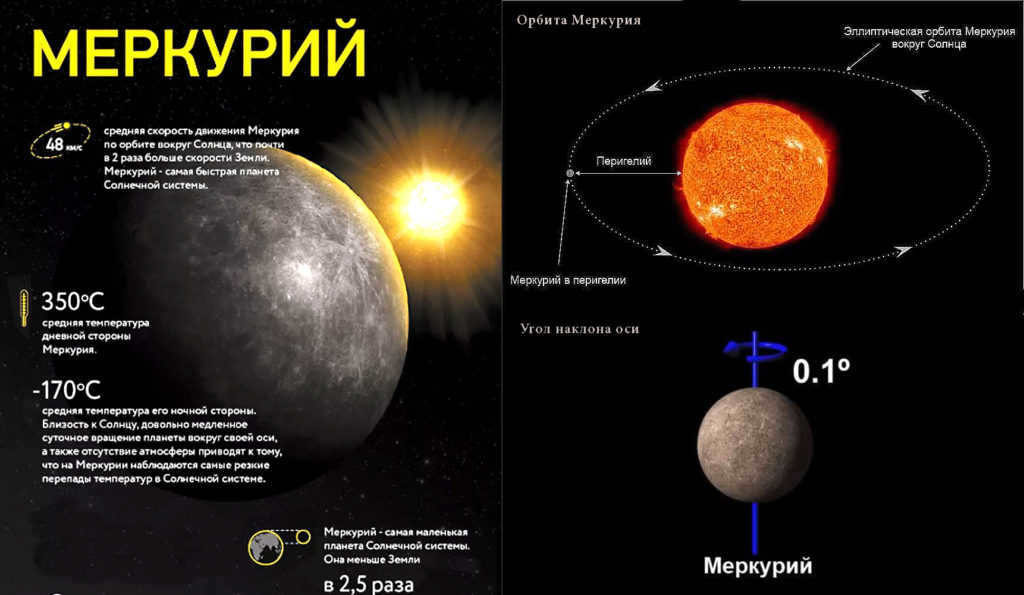
Venus
No changes are made to the climate on Venus: the planet experiences a perpetual summer with average temperatures exceeding +400°C.
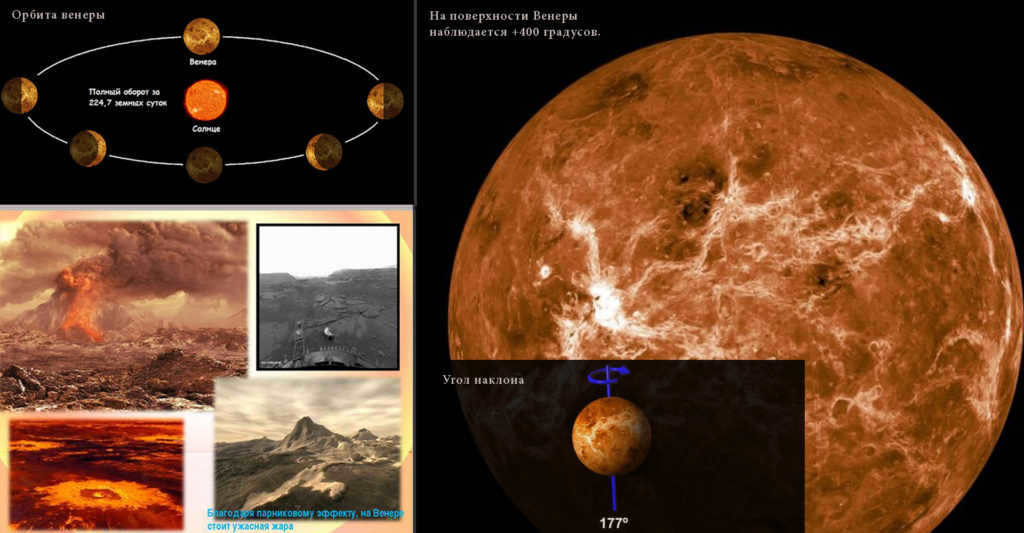
While Venus experiences the same season all year round due to its lack of axial tilt, Mars, on the other hand, has a slightly more seasonal climate. In fact, Mars is quite similar to Earth in its orientation in space, with a tilt that is less than 2° greater than ours.
However, the difference in temperature indicators between the seasons on Mars is particularly strong in the southern hemisphere. Here, frosty winters and sultry summers can be observed. On the other hand, in the opposite hemisphere, the contrast is smoothed out, resulting in calm summers and winters.
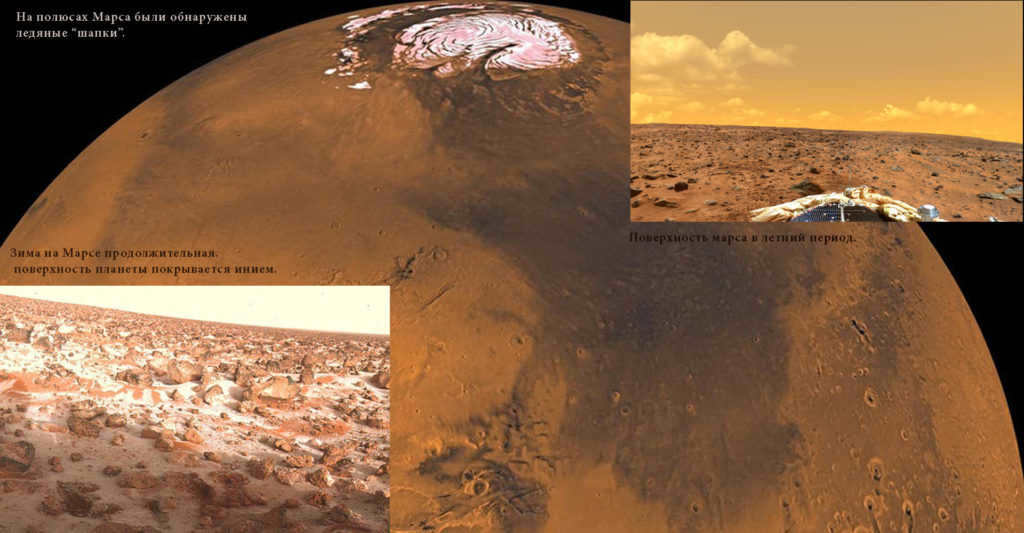
Jupiter
The inclination of Jupiter’s axis of rotation to the ecliptic is just over 3 degrees. The weather on Jupiter is constant throughout the year, with no seasonal changes.
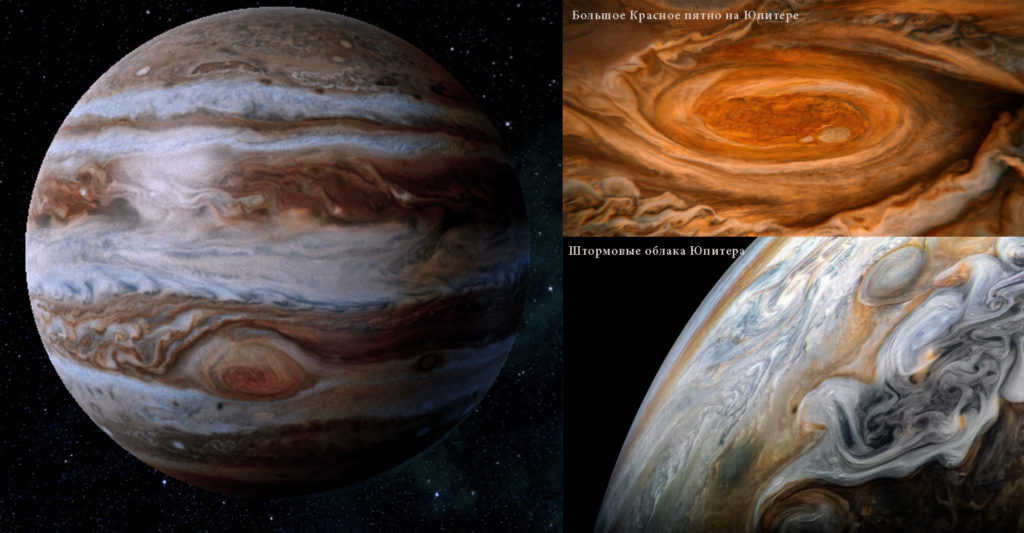
Planet Saturn
Planet Saturn exhibits distinct variations in the amount of heat and light it receives due to its 29° angle between its axis of rotation and its orbit around the Sun.
The duration of each season on Saturn is approximately 6-7 years, and during this time the planet undergoes slight changes in its coloration.
Typically, Saturn appears yellowish in color, but during the winter seasons, certain regions of the planet take on a blue hue.
This phenomenon can be attributed to the fluctuating intensity of UV radiation, which is weaker during winter and increases with the arrival of warmer seasons, according to scientists.
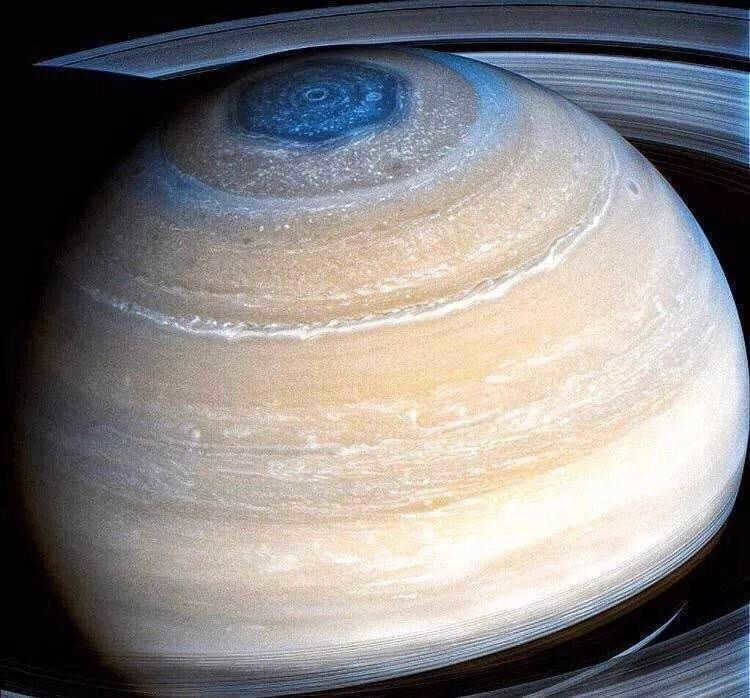
The picture provides a clear depiction of bluish regions, indicating the current dominance of winter on this celestial body. Credit: NASA.
During the solstice, one of the planet’s polar regions is directly facing the center of the solar system.
Unlike Earth, on Uranus there is no customary variation in the duration of daylight across the entire celestial body – at present, only the equator experiences sunrise and sunset. In the other parts of Uranus, there are 42-year-long periods of continuous polar day and night.
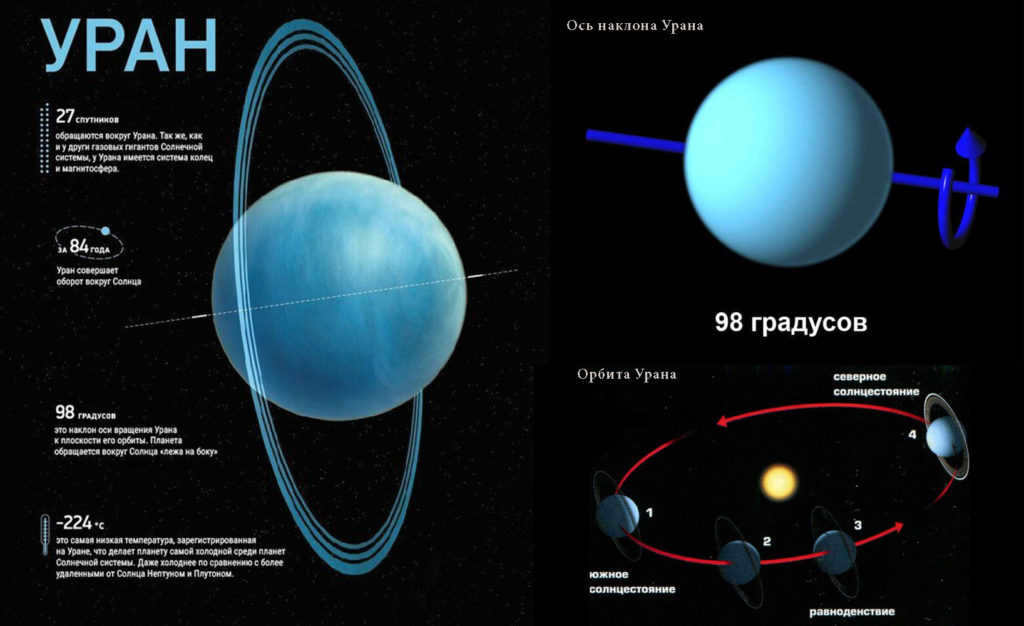
Neptune
The planet Neptune has a tilt of 30 degrees on its rotational axis, and its seasons would be similar to those on Earth if it weren’t for its significant distance from the center of the solar system.
Due to its distance, a year on Neptune lasts over 160 Earth years, with each season – winter, spring, summer, and fall – lasting for 40 years.
The photograph depicts the scientific observations made by researchers on the planet Neptune. The initial four columns showcase different perspectives of the planet at varying rotational angles. The final column represents an average of these observations. The incremental increase in brightness during each observation period demonstrates the Sun’s impact on Neptune. Consequently, it can be inferred that Neptune experiences seasonal changes akin to Earth, albeit at a much slower pace due to its considerable distance from the Sun. Credit: Icarus/NASA scientific journal.
Presently, the Neptunian southern hemisphere is experiencing summer, and the transition to fall is projected to occur in the years 2045-2046.


A Short Summary
Jupiter, which is 11.2 times larger than Earth and 318 times more massive, is the biggest planet in our solar system. Unlike Earth, Jupiter does not have a solid surface and is instead a gas giant made mostly of hydrogen and helium.
This massive planet was named after the main god in Roman mythology, Jupiter, while the Greeks referred to it as Zeus. What makes Jupiter unique is that it does not experience changing seasons due to its equator being tilted at only 3 degrees compared to its orbit. Similar to Saturn, Jupiter is surrounded by a system of faint rings, although these cannot be observed using amateur telescopes. Currently, there are 63 known satellites orbiting this magnificent planet.
What is the best time to observe Jupiter?
Jupiter is an incredibly visible planet, shining brightly second only to the Sun, Moon, and Venus. The optimal time to observe it is during opposition, which happens once a year and is when the planet is closest to Earth (this is typical for the outer planets). The date of opposition shifts by about a month each year (refer to Table 1). Generally, during summer oppositions, Jupiter doesn’t rise very high above the horizon, typically around 20-30 degrees for Russia. Therefore, the most favorable time for Jupiter observations are the winter oppositions, when the planet is visible high in the sky throughout the night. If the observer isn’t deterred by the cold weather, they have the opportunity to witness Jupiter complete a full rotation on its axis in a single night.
SPS – South Polar Cap – South Polar Cap SPS – North Polar Cap SJUP – South-South Temperate Belt SJUP – South Temperate Belt BKP – Great Red Spot SEP – Southern Equatorial Belt ES – Equatorial Band NEP – Northern Equatorial Belt NEP – Northern Equatorial Belt NEP – Northern Temperate Belt SSUP – North northern temperate belt SUS – South-South Temperate Zone SUS – South Temperate Zone SUTZ – Southern Temperate Zone SUTZ – Southern Tropical Zone EZ – Equatorial Zone NTZ – Northern Tropical Zone NTS – Northern Tropical Zone NNTZ – Northern Temperate Zone SSUS – North-Northern Temperate Zone
To further explore the characteristics of Jupiter, it is necessary to examine the intricate features of its atmospheric composition. Many of these specifics can only be observed using large amateur telescopes and require optimal viewing conditions and proficient observational abilities.
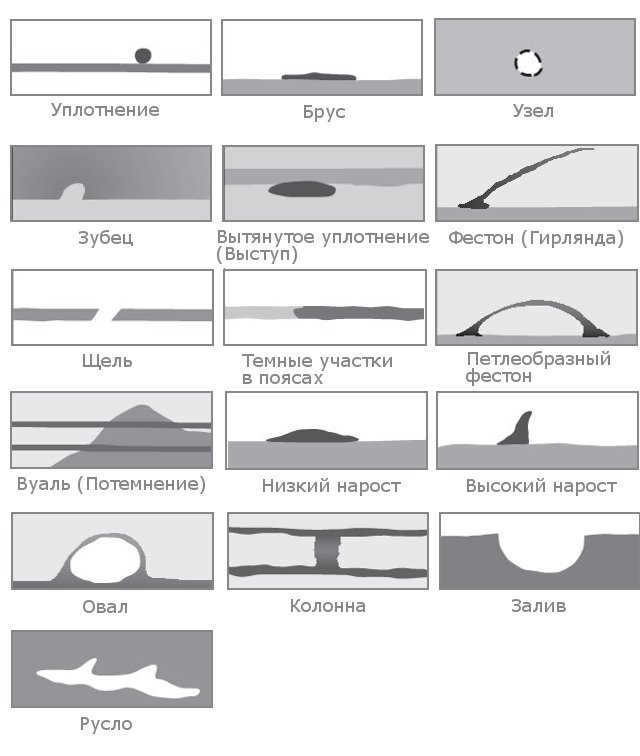
It is important to mention that when you witness the shadows of satellites on Jupiter’s surface, you are essentially witnessing a solar eclipse occurring on the planet at that very instant. This is akin to how we would perceive a solar eclipse on Earth if we were observing our planet from outer space.

The planets within the solar system have varying durations of day and year. It is common knowledge that Earth completes one full rotation on its axis every 23 hours, 56 minutes, and 4 seconds. Mars, too, has a day that is nearly as long. In other parts of the galaxy, there are celestial bodies where the day lasts less than ten hours, while others experience day and night changes that occur over 2/3 of an Earth year.


What factors determine the length of a day on each planet in the solar system?
The cycle of day and night
The time it takes for a celestial body in our star system to complete one rotation around its axis relative to the Sun is referred to as a solar day. This term is used to describe the cycle of day and night on celestial bodies that orbit the star.
The duration of the orbital period around the Sun varies significantly from planet to planet:
- Mercury – 87.98 Earth days;
- Venus – 243 days;
- Earth – approximately 24 hours;
- Mars – 24 minutes and 40 seconds;
- Jupiter – 9 minutes and 55 seconds;
- Saturn – 10 minutes and 35 seconds;
- Uranus – 17 minutes and 14 seconds;
- This variation in the duration of the day arises from variances in the rotational velocity of the planets in our solar system on their respective axes. It can be observed that the day is shorter on the gas giants owing to the swift rotation of their atmospheres. To put this into perspective, Earth and Jupiter have equatorial rotational velocities of 1620 km/s and 45000 km/s, respectively. In contrast, Venus rotates at a sluggish pace of merely 6.5 km/h, resulting in a day longer than a year.


